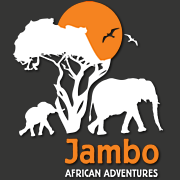Lake Nakuru Safari Overview
Lake Nakuru was first gazetted as a bird sanctuary in 1960 and upgraded to National Park status in 1968. The Park has Kenya’s largest population of rhinos. The surface of the Lake Nakuru occupies about a third of the park. It supports a dense bloom of the blue-green Cyanophyte Spirulina platensis from which it derives its colour and is a food source for flamingos. During peak season over millions of flamingos and Pelicans congregate on the lake.
Climate
Kenya lies on the equator and has a warm, tropical climate, but factors such as altitude and regional location can affect climate. Kenya’s daytime temperatures average between 20 and 28 degrees Celsius, but it is warmer on the coast.
Due to its positioning on the equator, Kenya does not have a specific summer and winter, but seasons can be distinctly divided into dry and wet seasons.
During the dry season (June to October) the sky is clear and the sun is shining, although these include the coldest months of the year. Early mornings can drop to around 12 degrees, so it is advised to pack warm clothing as morning game drives in open vehicles will be cold.
During the wet season (November to May) daytime temperatures vary between 24 and 30 degrees Celsius, depending on altitude. A period of ‘short rains’ occur between November and December, while the main rainy season, called the ‘long rains’ arrive after a short dry spell, in March April and May.
Lake Nakuru
By Road
The park has a tarmac road connection with Nairobi, a distance of 156 km north west of Nairobi on the main A104 road. The most commonly used route into the park is via the main gate, 4 km from Nakuru Town Centre. It is also possible to enter the park from the main Nairobi Nakuru road at Lanet Gate. The Nderit Gate is used by people accessing the park from Masai Mara or Elementaita.
Airstrips
The Naishi airstrip services the park for tourism and KWS activities.
Park Roads
The park has an adequate and well serviced motorable roads that make most parts of the park accessible.
Park Gates
The park has three gates, Main Gate and Lanet Gate that link the park with the Nairobi-Nakuru highway and the less used Nderit Gate.
- Flamingo (Greater and Lesser) and other water birds including a variety of terrestrial birds numbering about 450 species in total.
- Mammals: 56 different species including white rhinos,waterbuck etc.
- View-points: Lion hill, Baboon cliff and Out of Africa
- Hills: Enasoit, Honeymoon, Lion hill ridge etc
- Waterfalls: Makalia.
- Unique vegetation: About 550 different plant species including the unique and biggest euphorbia forest in Africa, Picturesque landscape and yellow acacia woodlands.
- Cycle with rhino event every September yearly








